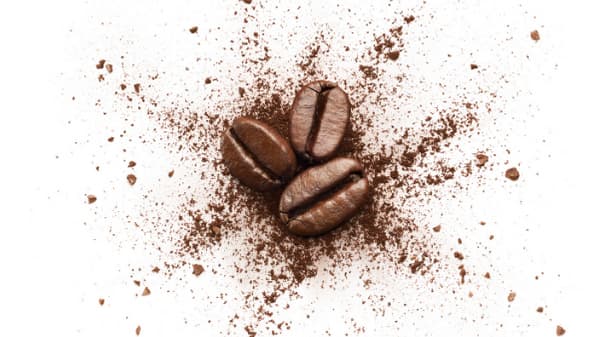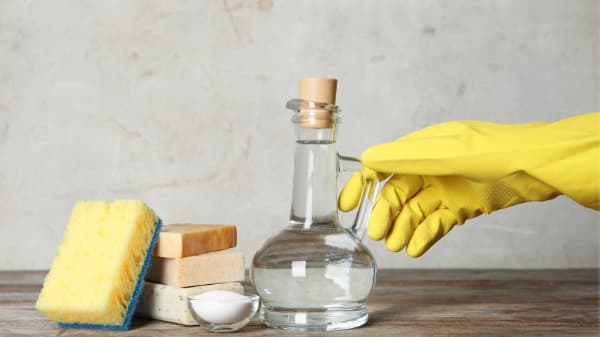How To Descale A Keurig Coffee Maker 2 Ways
You’d already spent countless hours looking for the right coffee maker for you. Finally, you settled for a Keurig.
And, it worked as expected…Until now, when it tastes weird and needs a thorough descale. But you’re not interested in faffing around looking for what MIGHT work.
You’ve landed at the right place. Let me unleash my descaling genius right here, right now, and get this solved for you.
Below, you’ll learn how to descale your Keurig machine and get back to the single button brewing genius that is Keurig.

Descale Keurig: Descaling Solution or Vinegar?
A common issue for most coffee lovers is the build up of scale in their machine.
But, what is scale or limescale exactly?
Given enough time, most machines will suffer from clogged pipes in the form of minerals called limescale. These minerals, mainly a layer of calcium carbonate and magnesium, naturally come from the water you usually use with your coffee maker.
Your machine needs to be descaled to solve this issue, which essentially introduces an acid to break down the limescale in the boiler and lines.
Descaling is necessary to maintain all types of coffee machines, whether it’s a Keurig coffee maker or a cafe-style espresso maker.
Using hard water, which is mineral-dense, can minimize the layering of minerals. Ultimately, it’s best to use distilled or soft water to help reduce the likelihood of scale build-up.
So..When should you descale your machine exactly?
The answer isn’t exact. It depends on how much the machines are used. For example, most commercial machines will be descaled every two weeks because of how many cups of coffee they produce.

However, for your home coffee makers, you might only be brewing a cup or two every day. If you’re in a coffee-loving household, it might be a good idea to flush out your Keurig every two months. Keurig recommends descaling their machines every three months.
More expensive Keurig machines will use a light to notify you if descaling is required, so for these, there’s no need to worry if your machine is becoming clogged up.
More generally, scale build-up is easily noticeable in most machines from its off-white and chalky appearance.
These minerals, while non-toxic, can slow down the liquid flowing in your machine, leading to your brew becoming over-extracted, which can then taste bitter or burnt.
Over time, this can also hinder coffee machines from reaching the optimal temperature for brewing and can also cause issues with their components.
Descaling cleans up your machine’s reservoir and lines from any bacteria, dirt, and build up, so it operates efficiently.
So, we’ve established that descaling is essential, but what should you use to clean up your machine?
Descaling Solution vs DIY Coffee Clean
Most manufacturers recommend using a descaling solution, but a common home remedy is to use a white vinegar solution instead.
Descaling solutions are mainly composed of different acids that can break down the scale inside the pipes of the machine.
You might also find other recipes on how to make descaling liquid from the comfort of your own home.
These typically involve lemon juice, baking soda, and cleansing tablets but using citric acid is the most effective though it might not be as readily available compared to white vinegar.

White vinegar, while also highly acidic and edible, can sometimes cause issues for your machine. Tasting vinegar in your coffee can be a harrowing experience, so be thorough in flushing it out your Keurig machine.
It can (and will from personal experience) take a while to purge off the smell and taste of white vinegar from the reservoir to the K-Cup holder.
You’ll also use more water to clean any residue as well compared to a specialized descaler.
Another thing about using white vinegar is that it can also damage the internal components like the rubber seals and gaskets, so Keurig does not recommend using this mixture.
With that said, if you run out of descaling liquid, using a vinegar solution is a good enough home remedy alternative to use if you’re in dire need to descale. Check out our guide below on how to descale your machine using vinegar or solution below.
How To Descale A Keurig With Vinegar
Stuff You’ll Need
You’ll only need a couple of things that you can find in your own home to descale Keurig machines. This can also work if you’re working with an expensive commercial coffee machine or for any other Keurig models.
- Measuring cups
- Two parts water (distilled if possible)
- One part white vinegar
- Additional water for purging
Make sure to get enough of both vinegar and water to reach the fill line of your tank. Some use a 50/50 vinegar and water ratio that can clean your machine faster but take note that it might take a long while to purge and degrade your machine even more quickly.

How To Do It?
Before you do step 1, make sure to detach any of your machine’s removable parts like the mug stand, pod holder, and k-cup holder, then clean them separately with warm water.
You can also wipe down your coffee maker’s exterior and any visible interior parts with a clean cloth as well. Once you’re done, check out our steps below to make your machine pristine.
- Turn on your coffee maker and pour in two parts of water and one part of vinegar into the reservoir.
- Place a cup on your drip tray and run a brew cycle with the highest capacity
- Keep running your Keurig until there’s no solution left inside the water reservoir. Discard the mixture once it comes out of the brew head.
- Fill the water reservoir with just clean water and repeat step 3 until your machine has no traces of vinegar left in its pipes.
Once it’s done, it’s a good idea to handwash your water reservoir and lid thoroughly with (light) soapy water before using your machine to avoid any white vinegar residue in your cup of coffee.
An optional step after purging your machine is to do one brewing cycle with coffee grounds and discard the brew hereafter. This is to ensure that your brew head has no vinegar residue, which can definitely affect the taste of your coffee.
How To Descale With A Keurig Descaling Solution
Stuff You’ll Need
Just like descaling with white vinegar, you’ll also need a couple of things to clean out the machine’s water lines and boiler. Keurig recommends using their own descaling solution, which is specifically designed to avoid the erosion of the machine’s components.
- One part descaling liquid
- One part clean water
It’s as simple as that!
However, one thing to note is that depending on what kind of pre-made mixture you’ll use, you might have to use more than just a bottle of the acidic mixture for the whole process.
Some brands will have you opting for a bottle and a half of solution, and it might also depend on how many cycles you’ll go through. It’s best to check out with the solution’s manufacturer for more information on how much you’ll need for your coffee maker.

How To Do It?
Cleaning out most coffee machines use the same process if you’re pouring in a white vinegar solution made in your home.
The instructions listed below are recommended and approved by Keurig so it’s best to go by the books to prolong your brewer’s lifespan.
- Turn your Keurig coffee machine off and take out any removable components and clean them separately.
- Pour in one whole bottle of descaling solution (amount might depend on the mixture) into the reservoir.
- Refill the bottle with clean water and add it to the mixture in the tank.
- Power up your coffee machine, and run a brew with the highest volume possible. Keep running your Keurig until the liquid in the tank has been depleted
- Some Keurig models should need to be left on for 30 minutes to rest after descaling. It’s best to check out your machine’s instruction manual for further information.
- Lastly, fill the reservoir with clean water and run a brew to rinse out any chemical remains.
Keurig suggests purging out your machine with water for about 12 brew cycles to avoid any unwanted flavors left in your coffee. They also recommend changing your water filter every two months to help delay any scale building up in the machines.
Another problem you might encounter is cross-contamination on your brew head. It is especially prevalent if you use different types of pods throughout your day to day. A way to avoid that is to use a rinse pod to clean out its brew head.
These maintenance techniques can be used at the same time to get the most out of your K-Cup the next time you’ll make a mug of your favorite coffee.
But, if the above didn’t solve your problem, check out our Keurig troubleshooting tips for a list of common issues and solutions for your brewer.
Summary
That’s how to descale a Keurig! It’s simple and doesn’t take too much time, but it makes a big difference in the quality of your coffee.
In a jam and have no descaler with you? Using white vinegar as an alternative can clean up the limescale building up, but it might leave some residue in your brew.
What If your machine is straining to make a cup of coffee? I’d recommended using a descaling mixture to avoid any unforeseen damages to your machine. The mixture is also stronger, which can flush out denser mineral layers.
Whichever mixture you’ll choose, it’s best to descale your Keurig regularly to get the most out of your coffee brewer. Remember, a clean machine will always make a good cup so keep on the lookout for other maintenance tips here at Sip Coffee!
Frequently Asked Questions
What does it mean when your Keurig says to descale?
Some Keurig coffee makers have a light or an indicator if your machine needs to be descaled.
This means that limestone and calcium deposits are building up in your coffee brewer’s lines, and it needs to be cleared out.
Too much scaling can degrade the taste of your coffee, disrupt water flow, and can even strain your machine’s boiler leading to damages.
Is a descaling solution better than vinegar?
Keurig recommends using a descaling solution, specifically their own, when flushing out any scale building up in the machine.
Both the white vinegar mixture and descaling mixture do a decent job in clearing out any mineral deposits in your coffee brewer.
However, the descaling solution can clean out heavier blockages without leaving a smell and not erode the machine’s components.

